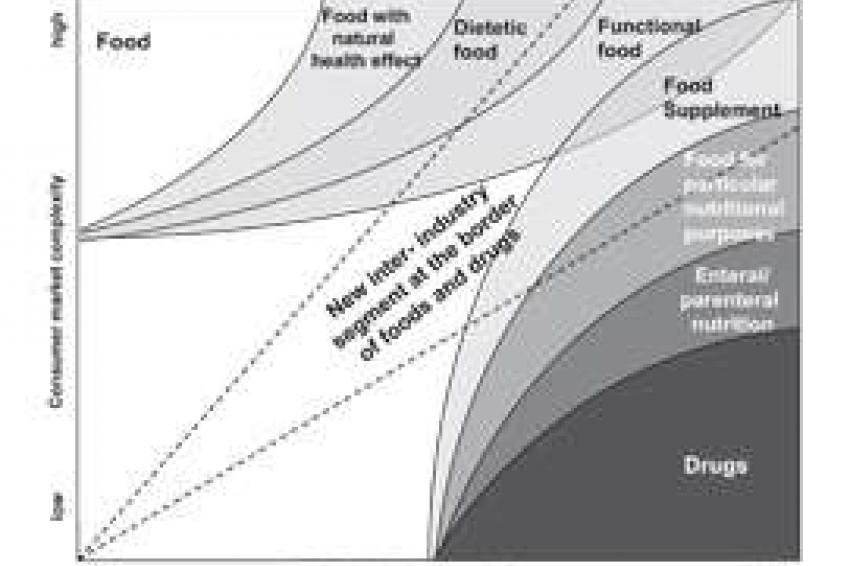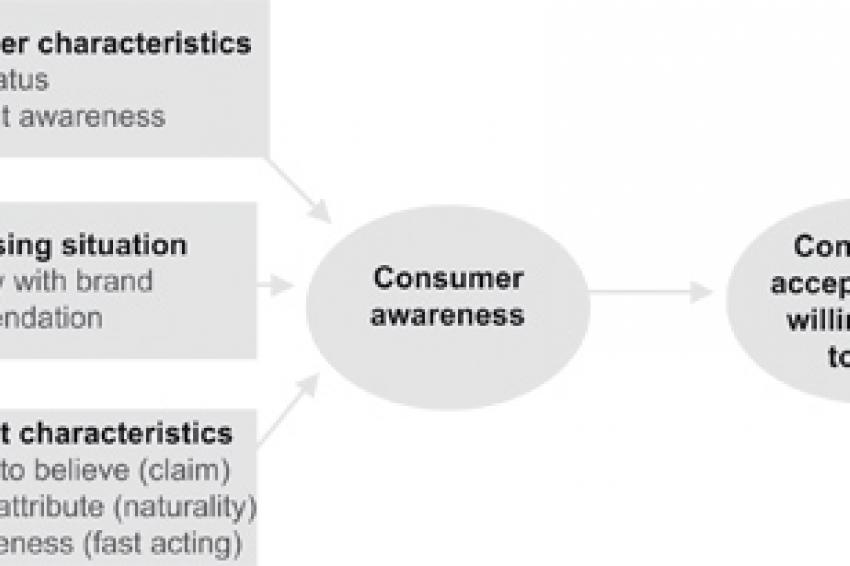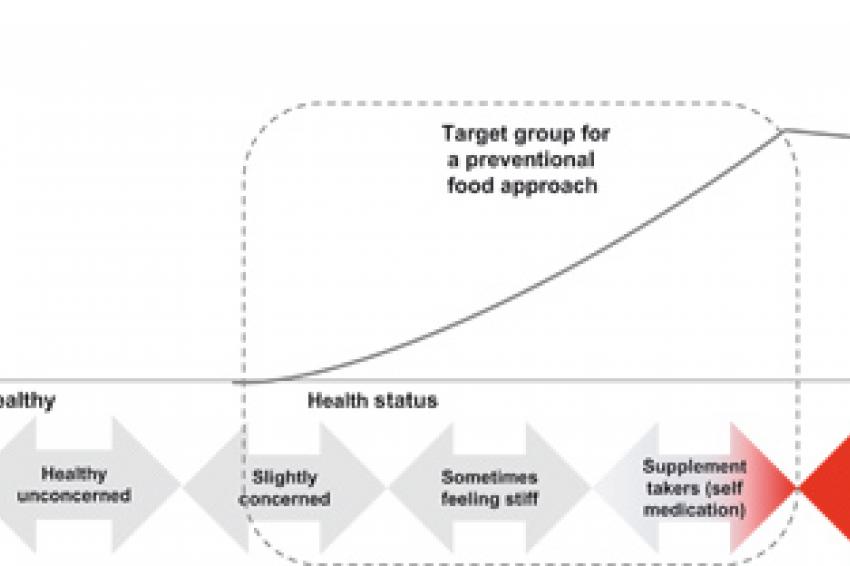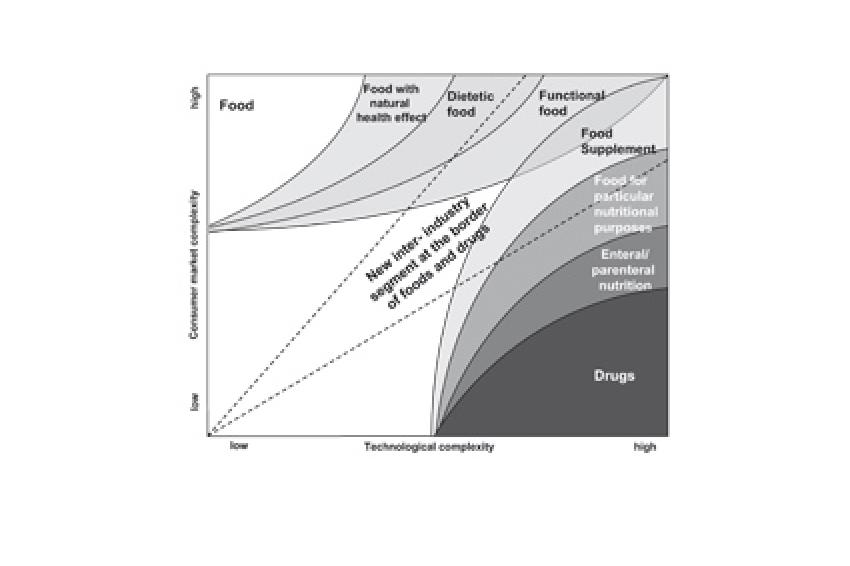Consumer Awareness of Health Ingredients
Walking the Fine Line of Innovation Between Foods and Drugs
Customer Is King - Innovations in food ingredients offer a plethora of opportunities to be tackled by different industry players. But these days, the European Food Safety Authority (EFSA) is to publish the third batch of its health claim assessments. Even though this development is fostering innovation as it initially sets a legal frame to it, communication of functional ingredients will be a challenging task in the future. Therefore, regulatory frameworks as well as consumer awareness at the B2B level are an ever more important task to consider before R&D funds are spent.
The market for food ingredients has changed rapidly in recent years. However, not only regulation - especially the health claims regulation (EC 1924/2006) - but also industry structure is evolving only gradually. At the same time, health and well-being is the most influential food trend opening up a well-spring of innovation opportunities for the food, the specialty chemicals and the pharmaceutical industries. One can detect multiple trends of convergence and a gradual overlap of especially the food and the pharmaceutical industry leading to a new inter-industry segment at the border between foods and drugs.
That this new inter-industry segment (Fig. 1) is no longer "just" an academic playing field to analyze competitive behavior, and innovation strategies of functional foods has become even more evident by facts to be observed in the industry itself nowadays. Nestlé´s recent announcements in September on the creation of "Nestlé Health Science S.A." and the "Nestlé Institute of Health Sciences" to confidently "... pioneer a new industry between food and pharma... " show that these opportunities will trigger more R&D and innovations in the future.
Challenges for Innovations Between Food and Pharma
Nestlé has set a very ambitious goal, as the area between food and pharma doesn't just need competences from both industries. Moreover, product approval and communication of health benefits often seems to consume multiple resources. This is because the health benefits of these hybrid products between food and drugs need to be backed up by sound science.
Accordingly, tendencies of industry convergence can be observed on the technological level in the application of the same technologies. Likewise, they increasingly manifest themselves on the regulatory level in similar regulatory requirements, such as clinical trials as required by EFSA as part of the assessment of health claims.
From the initially over 44,000 submitted dossiers to EFSA in order to obtain a health claim, and the consolidated package of 4,637 generic health claims submitted, only 5% will be approved as assumed by industry experts.
What does that mean for innovation of food ingredients with health properties? In those cases where a health claim under EC 1924/2006 is approved - be it a generic one based on existing science (Art. 13), or a new one involving new science (Art. 13.5), or a more detailed risk reduction claim or a claim pertaining to children (Art. 14) - the legal way to communicate health benefits has then been established. If that is not the case, there might be an option to use a nutritional claim based on the policies given in the annex of the health claims regulation. However, in those cases where a food supplier only uses the word "contains...", it then depends solely on the consumers individual degree of involvement, their ingredient related-knowledge and awareness, to perceive a benefit from the product or not.
The Importance of Consumer Acceptance and Awareness
So far, only a few innovations have turned out to be successful. Why is that? One key success factor for new products is consumer acceptance. New products on the market can only be successful if the consumer understands the product's positioning and the health claim. Therefore, consumer acceptance plays a pivotal role and needs to be assessed carefully before new product launch.
But how can one exactly predetermine consumer acceptance of a new product that carries a certain health claim? The construct of consumer acceptance is influenced by a number of endogenous and exogenous factors. Endogenous factors concern the relevant consumer characteristics that have an impact on the acceptance and later on, willingness to pay for a functional health benefit. These consumer-specific factors are accompanied by external influences such as the purchasing situation and external recommendation of the product.
The influence factor "consumer characteristics" concerns the health status of the consumer, the individual knowledge about ingredients leading to specific ingredient awareness (Fig. 2). With respect to the "purchasing situation" as a second factor influencing the consumer acceptance, the consumers' familiarity with a certain company or brand plays an important role. This is followed by the impact of key opinion formers, such as health professionals, which may influence consumer acceptance by recommendation of certain products respective to their functional health benefits.
Another factor that needs to be taken into account are the "product characteristics" themselves.
This third dimension presents a multifaceted phenomenon as product characteristics such as taste and other sensory functions can only be experienced ex post by the consumer. Therefore, the focus is on the initial purchasing situation and only takes into consideration search items such as the impact of the specific health claim and other attributes like quality claims and claims on the effectiveness of an ingredient.
Study Determines Consumer Awareness and Acceptance
Given the necessity of consumer acceptance for the adoption of new functional health ingredients by the market, the aim of this study is to explore the impact of the three main dimensions as detailed in Fig. 2. These include the purchasing decision of consumer characteristics - like their health status and personal ingredient awareness - and the influence of the purchasing situation as well as the product characteristics. In this study, the focus is on a new active ingredient for joint health based on natural eggshell membrane, which Stratum Nutrition began marketing this year.
Awareness Determined by Consumer's
Personal Involvement and Health Status
First of all, it is very important to know how consumers categorize their joint health, because personal attitudes influence the acceptance of certain products and their ingredients. Within this study, most of the interviewed German adults aged 40 years or older are at least concerned about their joint health. Considering the age distribution, it has to be mentioned that the older the consumer gets, the more joint health becomes a problem. The interviewees show a rather limited awareness of joint health ingredients.
However, the study reveals that the more joint health becomes a problem, the higher the consumer awareness of health ingredients is (Fig. 3), while users of non-prescribed drugs know best about health ingredients. This may be due to the highest degree of involvement and attention among actively searching consumers who are probing a supplement. Interestingly, as soon as the consumer is under medical treatment, the awareness declines, possibly due to the patient having the doctor look after everything, leading to less own information searching.
A Detailed Assessment Allows For Better Product Positioning
Product characteristics vary tremendously between different product categories. In this study, the focus is put on one special product for maintaining joint health. An important finding is that nothing seems more important to German consumers than a product recommendation given by health professionals. It is also important for German consumers that all contained natural health ingredients are declared on the package.
Most interestingly is the relevance of the effectiveness of a functional ingredient that was tested with the statements "fast action on pain reduction" and "fast action on flexibility increase." These two "fast action" claims have been rated as higher-than-average important by the sample.
Hence, for a positioning of the product (for example for the PARNUT category = foods for particular nutritional purposes) a consumer assessment may help to verify the target group and potential communication strategies
We thank Stratum Nutrition, a Novus international business for sharing practical insights and support for the study on consumer awareness of joint-health ingredients.
Contact
University of Applied Sciences Osnabrück
Oldenburger Landstr. 24
49090 Osnabrück
Germany
+49 541 969 5031
+49 541 969 5170









